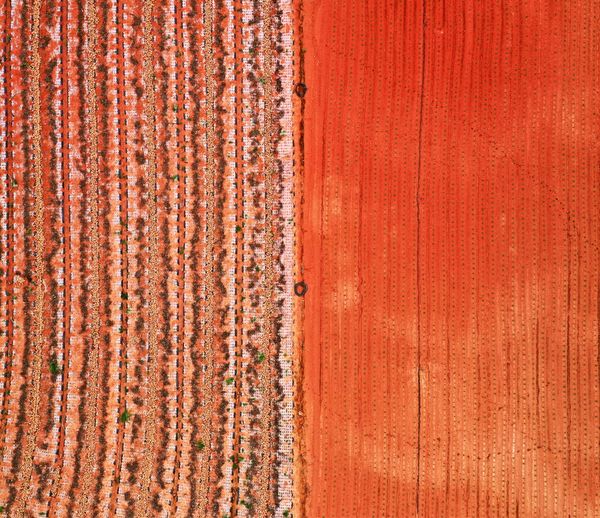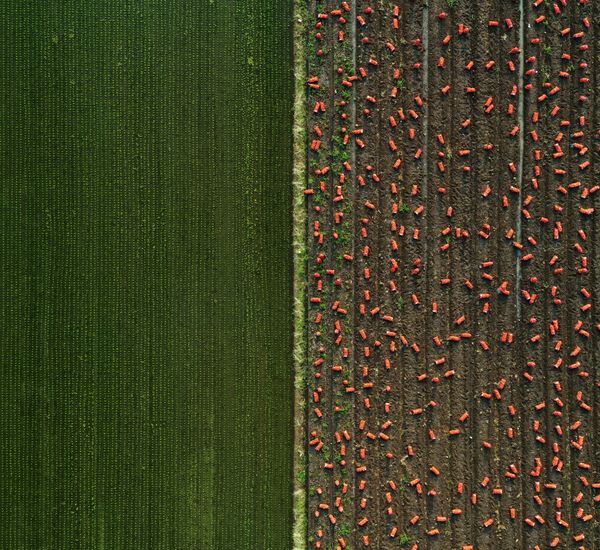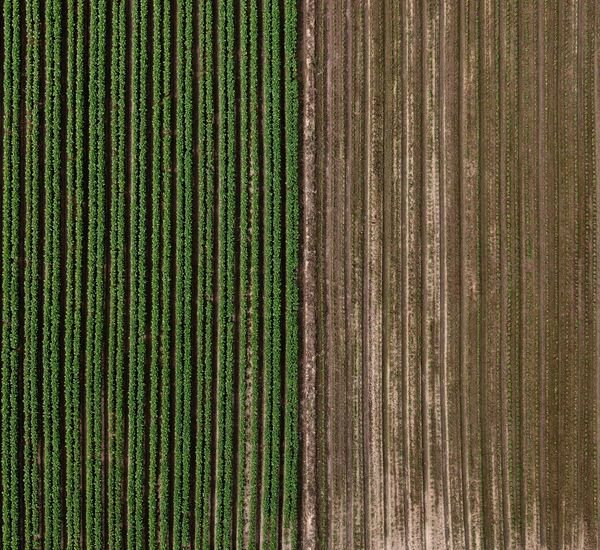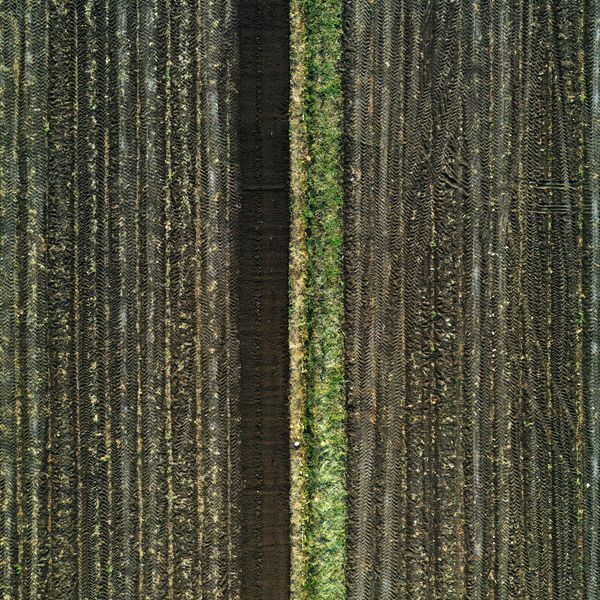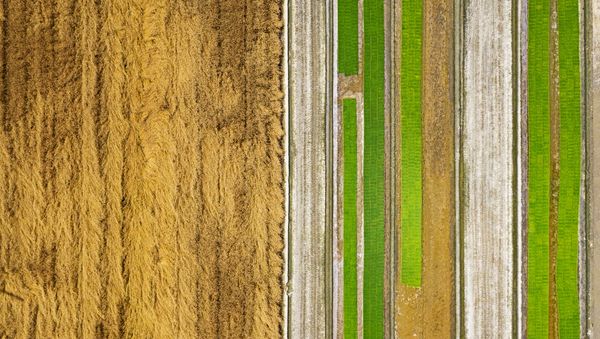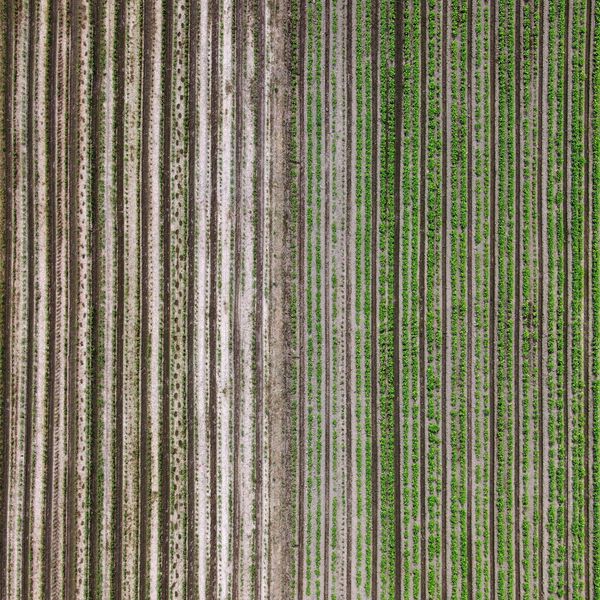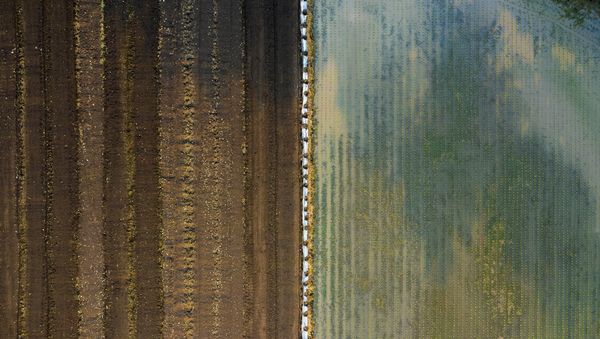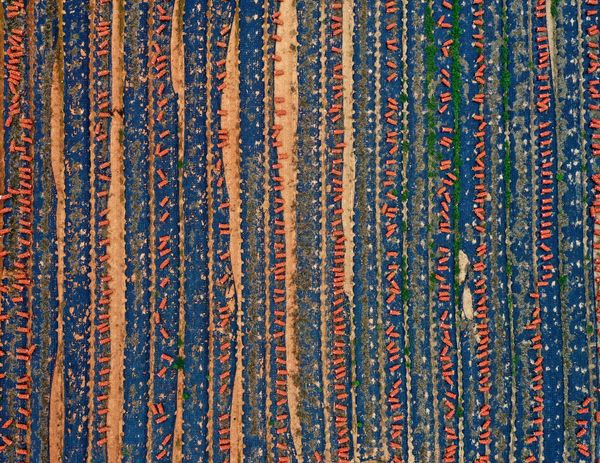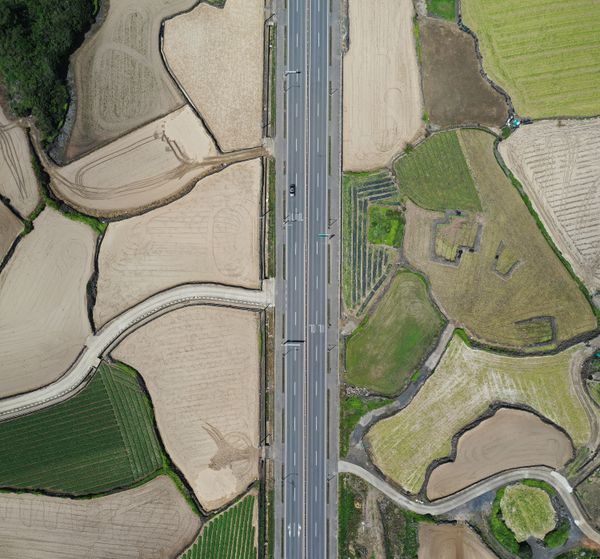Codes hidden in the NON
-
Dates2022 - 2025
-
Author
While recording the land, it also reveals the visual unconsciousness beyond it. The repetitive patterns of cultivation, the texture of water and soil, and the afterimages of the seasons unfold like a cross-section of a dream.
“Plane of Phantasmagoria”
I often look down on the earth from above. This gaze, looking up with a camera, is completely disconnected from our everyday vision. It is high and cold, and like the indifferent eyes of a god, it flattens everything. This gaze of relief eliminates the depth inherent in objects and space, and turns the landscape into a flat abstraction. A world without three-dimensionality, it is a place where reality and fantasy overlap vaguely.
I see phantasmagoria in that flatness. The landscape, where light and color are pressed flat and layered, collapses the boundary between reality and illusion, just like a scene in a dream. The viewer's gaze loses its center and floats above the surface. At this point, viewing becomes an act of dreaming, not perception.
This unrealistic flatness created by the overhead photography ironically reveals the truth of the landscape more clearly. It silently eloquently tells us how the land we step on every day is actually a place entangled with complex time, labor, memory, and oblivion. At the same time, these photographs ask: What is it that we see with our eyes? In the illusion contained in the flat surface, do you see the truth, or just the shell of a well-constructed dream?
These photographs are a chapter of phantasmagoria that contains such questions. They capture reality, but reveal fantasy. They record the land, but deconstruct the gaze. And finally, they make the familiar world strange.
